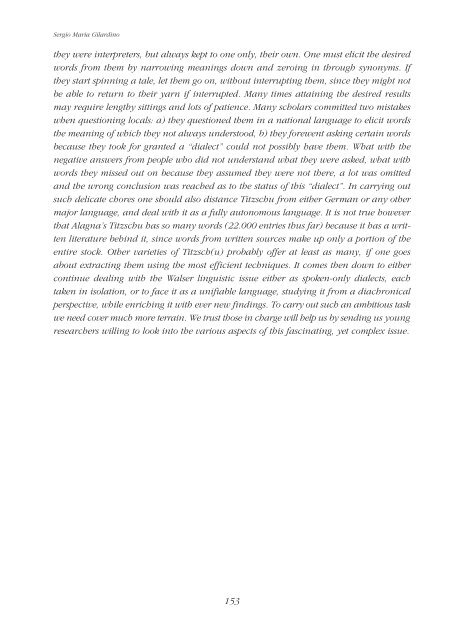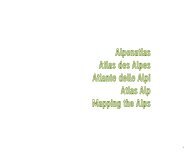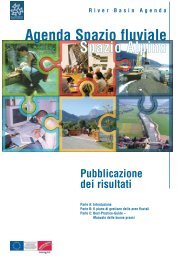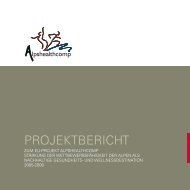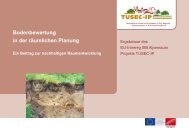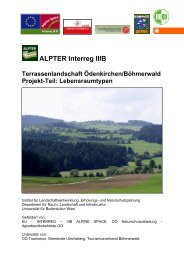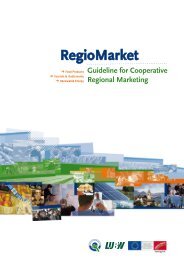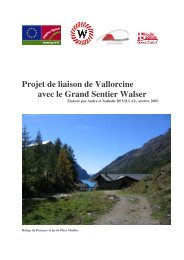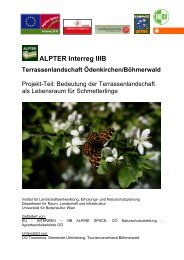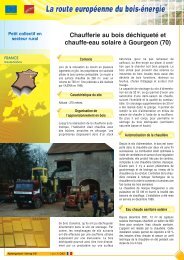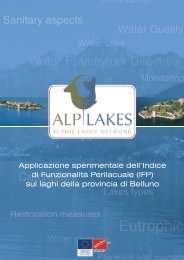WALSERSPRACHE - The four main objectives of the Alpine Space ...
WALSERSPRACHE - The four main objectives of the Alpine Space ...
WALSERSPRACHE - The four main objectives of the Alpine Space ...
Create successful ePaper yourself
Turn your PDF publications into a flip-book with our unique Google optimized e-Paper software.
Sergio Maria Gilardino<br />
<strong>the</strong>y were interpreters, but always kept to one only, <strong>the</strong>ir own. One must elicit <strong>the</strong> desired<br />
words from <strong>the</strong>m by narrowing meanings down and zeroing in through synonyms. If<br />
<strong>the</strong>y start spinning a tale, let <strong>the</strong>m go on, without interrupting <strong>the</strong>m, since <strong>the</strong>y might not<br />
be able to return to <strong>the</strong>ir yarn if interrupted. Many times attaining <strong>the</strong> desired results<br />
may require lengthy sittings and lots <strong>of</strong> patience. Many scholars committed two mistakes<br />
when questioning locals: a) <strong>the</strong>y questioned <strong>the</strong>m in a national language to elicit words<br />
<strong>the</strong> meaning <strong>of</strong> which <strong>the</strong>y not always understood, b) <strong>the</strong>y forewent asking certain words<br />
because <strong>the</strong>y took for granted a “dialect” could not possibly have <strong>the</strong>m. What with <strong>the</strong><br />
negative answers from people who did not understand what <strong>the</strong>y were asked, what with<br />
words <strong>the</strong>y missed out on because <strong>the</strong>y assumed <strong>the</strong>y were not <strong>the</strong>re, a lot was omitted<br />
and <strong>the</strong> wrong conclusion was reached as to <strong>the</strong> status <strong>of</strong> this “dialect”. In carrying out<br />
such delicate chores one should also distance Titzschu from ei<strong>the</strong>r German or any o<strong>the</strong>r<br />
major language, and deal with it as a fully autonomous language. It is not true however<br />
that Alagna’s Titzschu has so many words (22.000 entries thus far) because it has a written<br />
literature behind it, since words from written sources make up only a portion <strong>of</strong> <strong>the</strong><br />
entire stock. O<strong>the</strong>r varieties <strong>of</strong> Titzsch(u) probably <strong>of</strong>fer at least as many, if one goes<br />
about extracting <strong>the</strong>m using <strong>the</strong> most efficient techniques. It comes <strong>the</strong>n down to ei<strong>the</strong>r<br />
continue dealing with <strong>the</strong> Walser linguistic issue ei<strong>the</strong>r as spoken-only dialects, each<br />
taken in isolation, or to face it as a unifiable language, studying it from a diachronical<br />
perspective, while enriching it with ever new findings. To carry out such an ambitious task<br />
we need cover much more terrain. We trust those in charge will help us by sending us young<br />
researchers willing to look into <strong>the</strong> various aspects <strong>of</strong> this fascinating, yet complex issue.<br />
153


